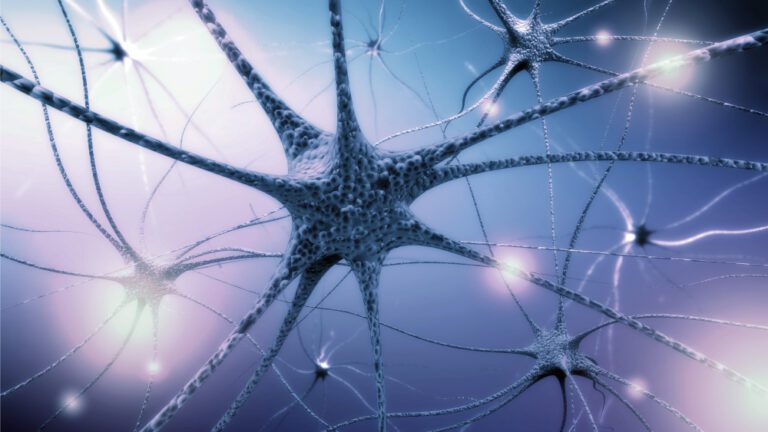
[ad_1]

One of the workhorses of in any biology lab is Caenorhabditis elegans or nematode worm just 1mm long. Biologist regularly use C. elegans to gain insight into topics ranging from embryonic development and aging to genetics and neurobiology.
In 1986, C. elegans became the first to have its entire nervous system mapped out. This creature, it turns out, contains just 302 neurons with 7000 synaptic connections between them, the fewest of any animal.
Scientists hoped that such a map — a connectome — would help them reverse-engineer the behavior of the nervous system by measuring how a stimulus to one neuron affects the others. This, they thought, would allow them to predict the behavior of the creature in any circumstances.
But things haven’t worked out like that. It turns out that measuring the effect of one neuron on another in a living creature is exceedingly difficult, let alone the effects on all 301 other neurons.
Since then, various breakthroughs have made these kinds of in vivo measurements significantly easier. Now Gal Haspel at the New Jersey Institute of Technology in Newark and colleagues, say that the goal of reverse-engineering C. elegans entire nervous system is now within grasp. “C. elegans has far fewer neurons and neuron-neuron connections, making it a great starting point,” they say.
Profound Discovery
Success would have profound implications. It would allow a computer to use these measurements to simulate the nervous system of a living organism for the first time — that’s reverse engineering. It would provide profound insights into the way creatures process sensory information, make decisions, and how they learn and behave. And it would pave the way for reverse engineering more complex brains, including our own, perhaps even inspiring entirely new kinds of artificial intelligence.
The connectome — an anatomical map of links between neurons — is insufficient to reconstruct the way the nervous system works in practice. That’s because the map lacks information about synapse strengths and the way each neuron behaves. What’s more, in C. elegans every neuron receives inputs from dozens of others.
Teasing all this apart can only be done with detailed, painstaking measurements that are beyond the capability of mortal human lab workers.
But that changed in the early 21st century when scientists developed a set of techniques for switching genes on and off with light. So-called optogenetics can be used to stimulate neurons with light and then measure the effects by looking for the light emitted.
At the same time, scientists have developed ways to automate the measurements of neural activity in vastly parallel experiments. This creates vast datasets which machine learning techniques can use to reconstruct the original behavior of the neurons in a wide range of conditions.
Haspel and co say these innovations should finally make it possible to reverse engineer C. elegans nervous system at last. And they have put together a large consortium of scientists with all the requisite skills to get it done.
They propose automating experiments on a massive scale to systematically understand all the connections between neurons. Optogenetics will allow researchers to activate neurons in C. elegans with light and to record the responses across the nervous system. Advanced microscopy will image the location of key molecules while also tracing neural morphology at nanoscale resolution.
The goal will be to determine how each neuron’s output depends on the activity of every other neuron that connects to it. Modelling these interdependencies will reveal the computational rules embedded in the structure of C. elegans’ nervous system.
Brain States
By exhaustively mapping these functional connections between neurons, this large-scale initiative aims to reverse engineer a complete simulation of the C. elegans brain. “Modern machine-learning based modelling should then enable a simulation of C. elegans’ impressive breadth of brain states and behaviors,” say the team.
That’s an ambitious goal and one with significant implications. Having a virtual version of the C. elegans nervous system will allow rapid, inexpensive hypothesis testing. Researchers can tweak in-silico versions of neurons to observe the simulated effects on worm behavior. That could help screen potential drugs and gene therapies for neural disorders ahead of animal trials.
“Reverse engineering C. elegans will provide a Rosetta-stone-like translation between the language of annotated connectomes and functional properties,” say Halpern and colleagues.
Ultimately, the insights gained from reverse engineering the simple C. elegans nervous system could be used to create virtual models of more complex nervous systems with the ultimate goal of reproducing the human brain in all its complexity.
That’s still a distant dream but one with magnificent potential.
Ref: To reverse engineer an entire nervous system : https://arxiv.org/abs/2308.06578
This article was prepared with the assistance of Claude.AI
[ad_2]